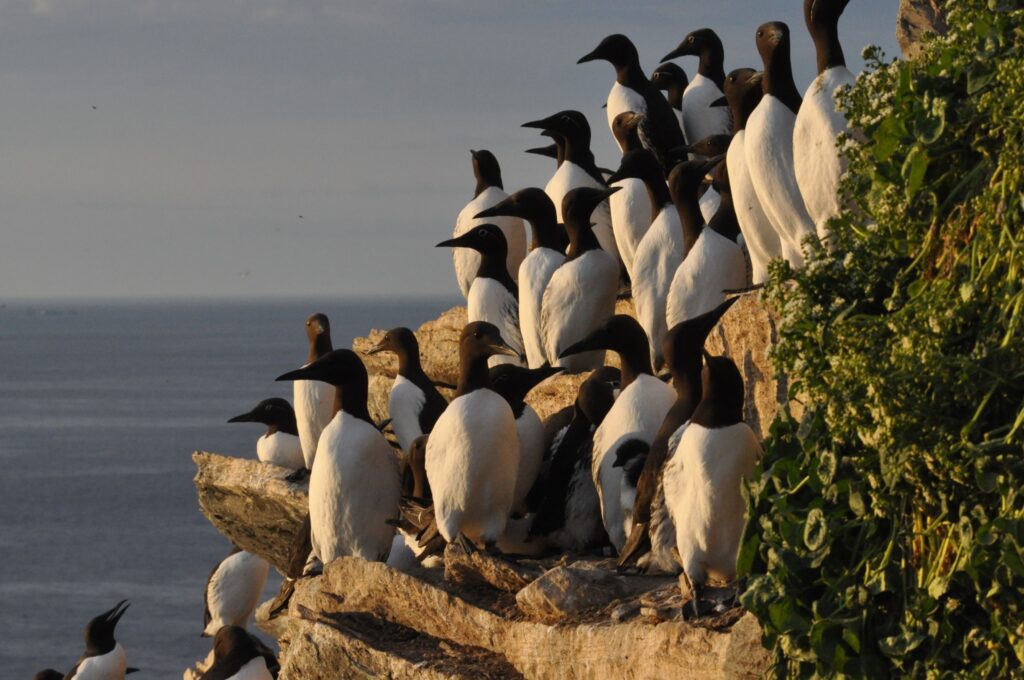The common guillemot can keep track of day and night even under the midnight sun
How seabirds keep track of day and night during the arctic summer with continuous daylight is poorly understood. A study from the SEAPOP-locality Hornøya reveals that common guillemots maintained a diel variation in melatonin levels and hence can use melatonin to signal the time of day, but that the concentration of melatonin could be modulated behaviorally.
Biological clocks
The day-night rhythm helps many animals to keep track of time and is of significant importance for behavioural and physiological processes. Hormones might also act as “biological clocks”, and melatonin and corticosterone are two such hormones associated with timekeeping. The concentration of melatonin increases during night and decreases as light intensity increases. Corticosterone, on the other hand, is known to decrease when birds are active and increase during inactive phases. Studies of corticosterone in birds during the polar summer have shown no or little variation across the diel cycle, but is this also true for the common guillemot?
Plumage colour dimorphism
There are two colour morphs of the common guillemot in the Atlantic Ocean. One, the bridled guillemothas a white ring around the eye that extends down the auricular grove. The unbridled morph lacks these white markings. The proportion of bridled individuals within a breeding population increases northwards, suggesting that the two morphs have different thermal adaptations. Some differences in fitness-related traits between the two morphs have also been registered, such as differences in metabolism, parental investment and circadian rhythms. Little is known, however, if there exists any correlation between plumage dimorphism, colony attendance (when incubating eggs or brooding chicks) and the concentrations of melatonin and corticosterone among common guillemots breeding in arctic conditions of continuous daylight. To gain better insight into the functional role of melatonin and corticosterone, and to investigate whether plumage dimorphism affects colony attendance and concentrations of melatonin and corticosterone, scientists collected blood samples of both bridled and unbridled guillemots systematically throughout the day during parts of the breeding season on Hornøya in Finnmark.
Maintained a diel profile in melatonin
The analysis showed that the concentration of melatonin increased at night and decreased during the day, supporting the hypothesis that the hormone enables the common guillemot to signal the time of day physiologically under natural continuous daylight. This is most likely correlated with light intensity, which is much lower at “night” even if the sun is constantly above the horizon. Unbridled individuals also had slightly higher levels of melatonin than bridled individuals. Since bridled individuals attended the colony less than unbridled individuals, this indicates that common guillemots can modulate the concentration of melatonin through their behaviour. The concentration of corticosterone was more stable throughout the day for both morphs and thus unlikely to be important for timekeeping. This study is important for our understanding of how physiological processes are affected under the conditions of continuous light, but further studies are needed to fully understand the underlying and evolutionary processes observed for both morphs of common guillemot.
Read the article:
Contact person: Kjell Einar Erikstad, NINA

